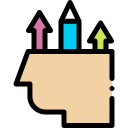In today’s fast-paced digital era, mastering the use of digital tools and resources is essential for success in any English-based environment. Whether you’re a student, professional, or lifelong learner, understanding how to make the most of online platforms can enhance your productivity, communication, and access to information. This guide offers comprehensive insights into discovering, evaluating, and utilizing English-language digital tools, empowering you to achieve your goals and adapt to evolving technological landscapes with confidence and skill.

Types of Digital Tools for English Users
Digital tools in English span a wide array of functions, including but not limited to word processing, communication, collaboration, research, media creation, and learning management systems. Each category serves distinct purposes and may come designed as standalone solutions or integrated suites. For instance, productivity tools like Google Workspace and Microsoft 365 cater to document creation, spreadsheet analysis, and presentations—all within English interfaces. Meanwhile, communication platforms such as Slack, Zoom, and Microsoft Teams cater to both formal business interactions and casual exchanges. Understanding the taxonomy of available digital tools enables you to select the most appropriate option for your needs, whether you’re drafting essays, engaging in virtual meetings, or conducting academic research.

Digital Literacy as a Foundational Skill
Digital literacy is the ability to access, evaluate, and use digital tools efficiently and responsibly. For English users, this involves not only technical proficiency but also the ability to discern credible information and effectively communicate using digital platforms. Possessing digital literacy means knowing how to protect your privacy, recognize potential scams, and troubleshoot technical problems. It’s also about cultivating a mindset of adaptability, as digital tools continue to evolve rapidly. Embracing continuous learning and seeking out training resources can greatly enhance your comfort with new platforms, ensuring you remain agile and confident amid technological changes.

Tracking Trends and New Resources
Staying current with the latest digital tools can seem overwhelming, given the relentless pace of technological innovation. However, being aware of trends—such as the integration of artificial intelligence in writing assistants or the rise of interactive learning applications—can help you capitalize on new opportunities. Reliable sources for updates include technology blogs, professional development webinars, and newsletters from respected organizations. It’s beneficial to build a habit of dedicating time to explore new platforms, read user reviews, and participate in online communities where tool recommendations and practical tips are regularly shared. Continuous engagement ensures you’re always equipped with the best resources available.

Criteria for Assessing Reliability and Credibility
Reliability and credibility are paramount when choosing digital tools, especially those related to information or communication. Start by investigating the reputation of the tool’s provider, reading online reviews, and checking endorsements from recognized organizations. Evaluate whether the platform is regularly updated, offers clear documentation, and provides user support. Tools that are transparent about their data usage and privacy policies should be favored. Additionally, consider if the tool is widely adopted and whether there are frequent reports of issues or downtime. By adhering to these criteria, you drastically reduce the risk of encountering unreliable tools or falling victim to scams.

Compatibility and Accessibility Considerations
An often-overlooked aspect of selecting digital tools is ensuring they’re compatible with your devices and accessible to all users. Check the system requirements and whether the tool is available for your operating system—be it mobile or desktop. Accessibility goes beyond technical compatibility; it encompasses the usability of the interface, the availability of language support, and features catering to users with disabilities, such as screen reader compatibility and keyboard navigability. Prioritizing accessible tools not only broadens your own use but also fosters inclusivity, allowing effective collaboration with individuals of varying abilities and technical backgrounds.

Security and Privacy in English-Language Tools
With increasing online threats, security and privacy have become major concerns when adopting digital tools. Always ascertain whether a tool offers adequate protection for your data, such as encryption and secure login procedures. Examine what information the tool collects and how that data is stored or shared. Be especially cautious with tools that require access to your files, emails, or personal details. Prefer platforms that are compliant with recognized data protection standards, such as GDPR. Staying vigilant and updated on security best practices ensures your digital experience in English environments remains safe and trustworthy.
Making the Most of Online Learning Resources
Identifying Trustworthy Learning Platforms
The sheer volume of learning platforms available in English can make selection challenging, but there are indicators to look for that distinguish trustworthy providers. Reputable platforms typically partner with accredited institutions, employ knowledgeable instructors, and receive positive user testimonials. They often provide transparent information about course content, pricing, and certification. Free resources from libraries, universities, and official government organizations also offer substantial value. When choosing a platform, consider your goals—whether earning credentials, learning new software, or expanding subject knowledge—and how the platform’s offerings align with those objectives.
Building a Personalized Learning Network
Beyond formal courses, building a personalized learning network (PLN) allows you to curate a stream of knowledge tailored to your interests. This might involve subscribing to educational YouTube channels, joining online study groups, or participating in forums focused on your areas of study. PLN-building is about connecting with like-minded individuals, mentors, and communities who share resources, answer questions, and inspire new perspectives. Platforms like LinkedIn, Reddit, and dedicated educational websites are excellent for ongoing, informal learning and can complement structured online courses.
Integrating Learning Into Daily Routines
Learning online need not be a disruptive task—it’s often most effective when integrated seamlessly into your daily schedule. Setting aside dedicated periods for digital study, utilizing mobile applications during commutes, and subscribing to daily or weekly digests can help reinforce your learning efforts. Many digital tools allow you to track progress and set reminders to maintain consistency. Over time, these habits result in significant skill development and knowledge accumulation, making the process less overwhelming and more sustainable in the long run.
